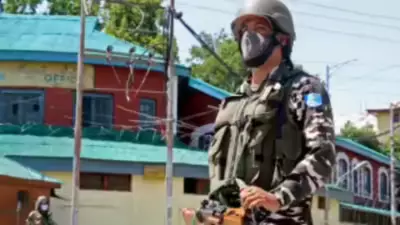
Residents and political leaders in Garhshankar have launched a strong protest against the potential inclusion of their area in the proposed Sri Anandpur Sahib district, creating a new administrative controversy in Punjab. The movement has gained significant momentum with local stakeholders presenting multiple arguments against this geographical reorganization.
Widespread Opposition from Local Community
The protest movement has united various segments of Garhshankar society, including political representatives, social organizations, and ordinary citizens. Senior Akali Dal leader and former MLA Sohan Singh Thandal has emerged as a prominent voice opposing the merger, emphasizing the historical and administrative connections between Garhshankar and Hoshiarpur district.
Local residents argue that Garhshankar has traditionally functioned as an integral part of Hoshiarpur district, sharing cultural, economic, and administrative ties that span generations. The proposed shift to Sri Anandpur Sahib district would disrupt these long-established connections and create unnecessary complications for the local population.
Geographical and Practical Concerns
One of the primary objections raised by protesters focuses on the significant geographical distance between Garhshankar and the proposed district headquarters at Sri Anandpur Sahib. Residents point out that this considerable separation would create substantial difficulties for people requiring regular access to district administrative offices and services.
The practical implications of this distance cannot be overlooked. Local farmers, business owners, and citizens needing to complete official paperwork or access government services would face increased travel time and expenses. This logistical challenge particularly affects those with limited financial means who rely on efficient access to district-level facilities.
Political Representation and Leadership Support
The protest movement has garnered support across party lines, with Sohan Singh Thandal taking a firm stance against the proposed inclusion. The former MLA has been actively mobilizing public opinion and coordinating with community leaders to present a unified opposition to the state government.
Local political representatives argue that the administrative reorganization should consider the practical needs and historical connections of the areas involved. They emphasize that any district boundary changes must prioritize the welfare and convenience of residents rather than following arbitrary geographical divisions.
The involvement of established political figures like Thandal indicates the seriousness of the opposition and suggests that the protest movement has substantial organizational backing. This political support increases the likelihood that the concerns of Garhshankar residents will receive serious consideration from state authorities.
Administrative Efficiency Considerations
Beyond geographical concerns, protesters question the administrative logic behind including Garhshankar in the proposed Sri Anandpur Sahib district. They argue that the current administrative setup under Hoshiarpur district functions effectively and meets the needs of local residents.
The reorganization could potentially create confusion and inefficiency during the transition period, affecting everything from property records to law enforcement jurisdictions. Local businesses and institutions that have established relationships with Hoshiarpur-based administrative systems would need to rebuild these connections with new offices in Sri Anandpur Sahib.
Community leaders suggest that if the government proceeds with creating a new district, the boundaries should reflect natural geographical contiguity and established administrative patterns rather than creating artificial divisions that inconvenience residents.
Broader Implications for Punjab's Administrative Structure
This controversy emerges within the larger context of Punjab's ongoing administrative reorganization efforts. The creation of new districts represents a significant restructuring of governance systems that will have long-term implications for development planning and resource allocation.
The Garhshankar protest highlights the importance of community consultation in such administrative decisions. It demonstrates that local populations have strong opinions about how boundary changes might affect their daily lives and access to essential services.
As the state government considers these reorganization proposals, the situation in Garhshankar serves as a case study in balancing administrative efficiency with community preferences and historical connections. The outcome could set precedents for how similar situations are handled in other parts of Punjab undergoing administrative changes.
The residents of Garhshankar continue to organize and voice their opposition, hoping that the state government will reconsider the proposed boundaries and maintain their area's connection with Hoshiarpur district. The movement represents a classic example of local democracy in action, with citizens actively participating in decisions that affect their governance structures.





